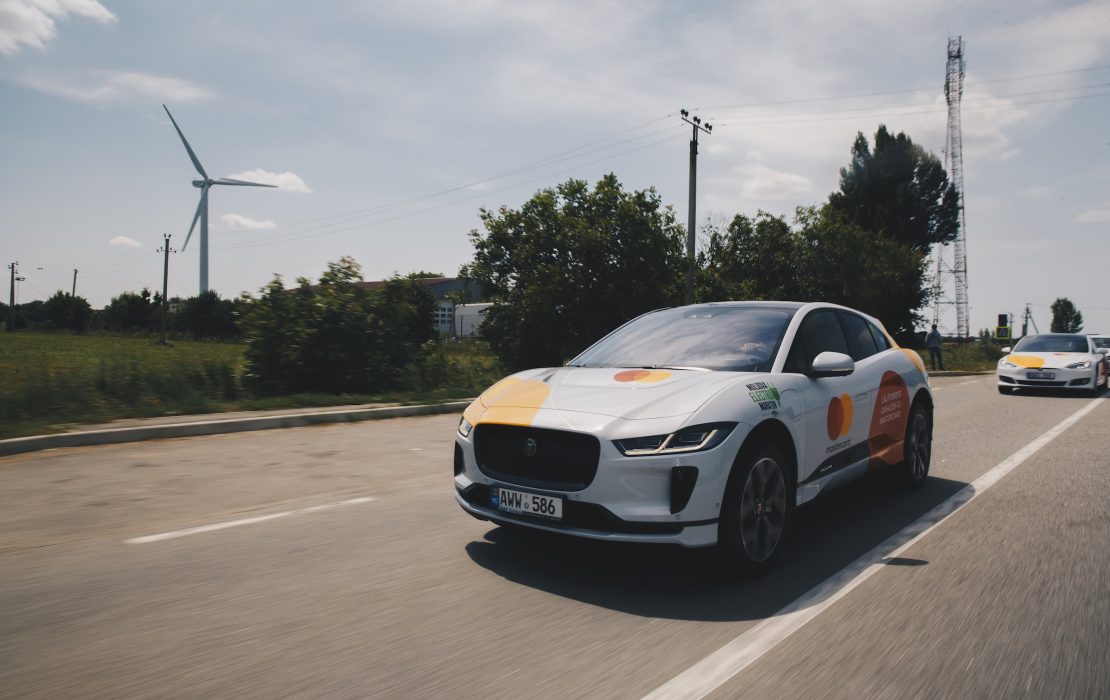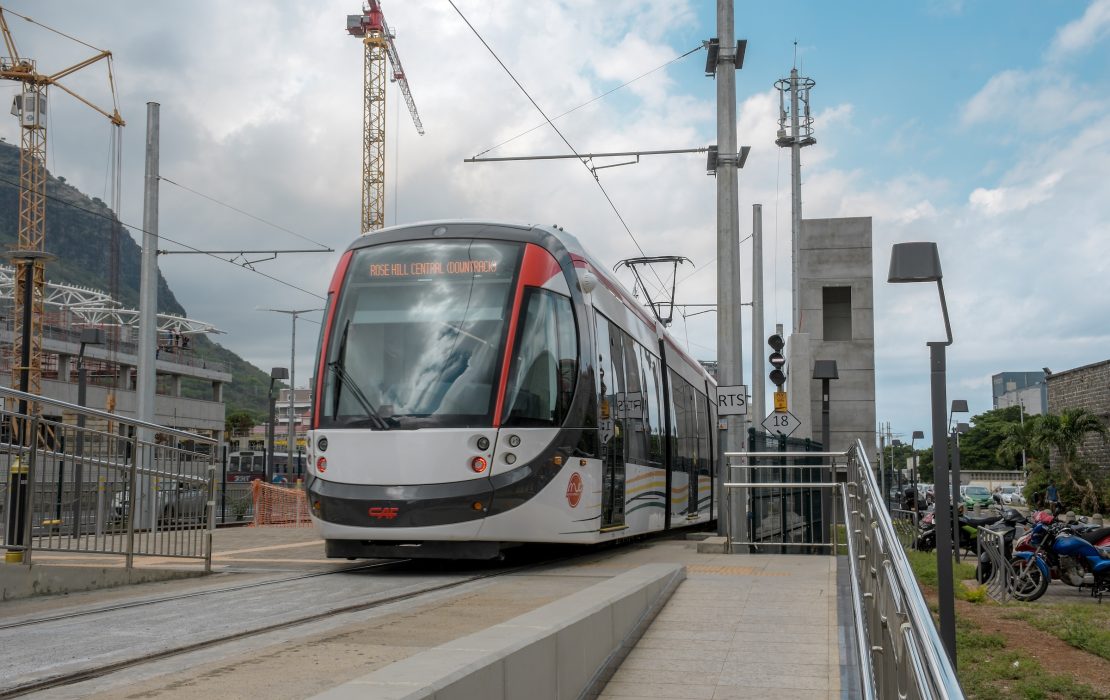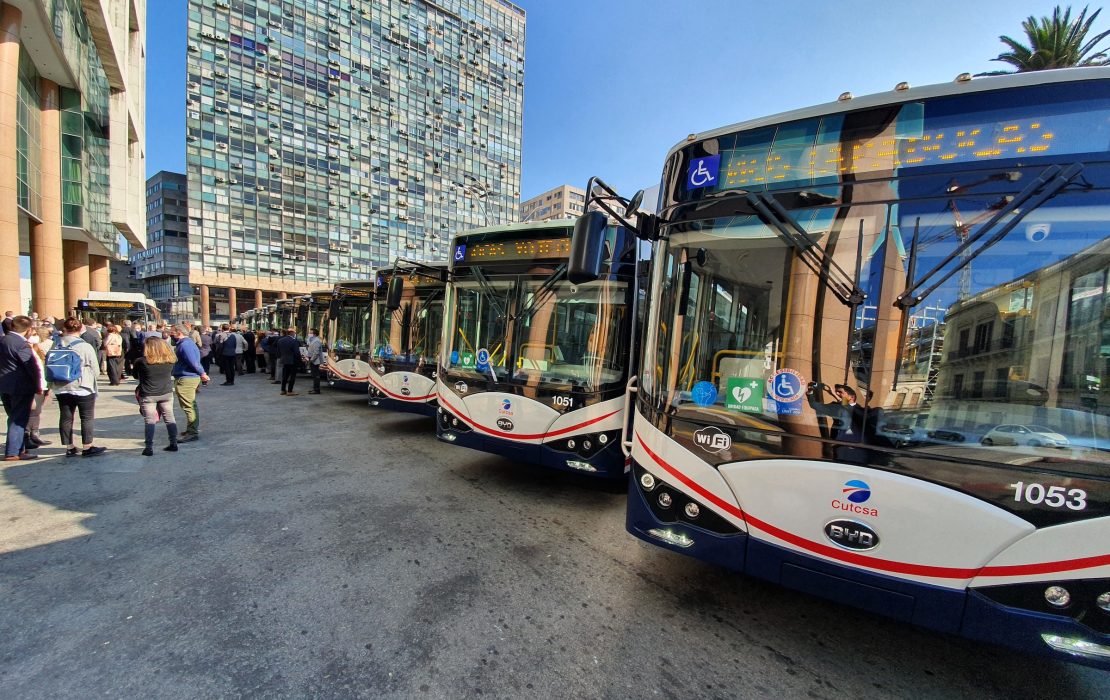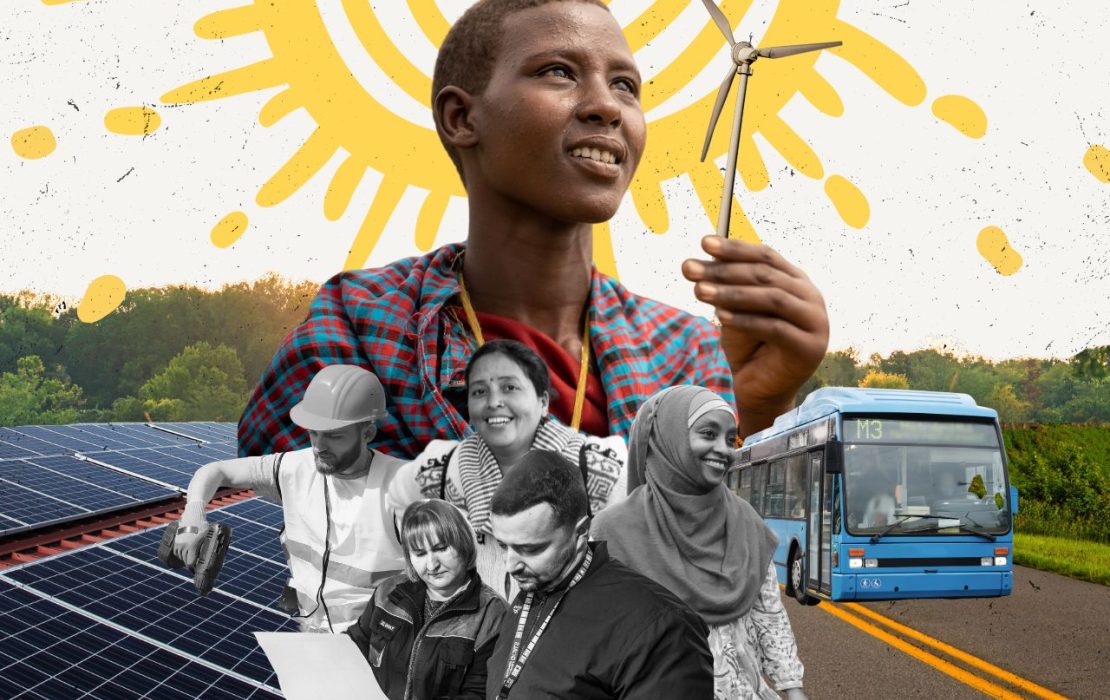
Summary
- Sustainable transport seeks to minimize greenhouse gas emissions and environmental impacts, while ensuring safety and affordability and providing equitable access to mobility for all.
- Sustainable transport integrates technology, infrastructure, planning, policy and behavior change.
- The transport sector is responsible for 13.7 percent of global greenhouse gas emissions, making its transformation urgent for tackling climate change.
- Sustainable transport provides many benefits including economic stability, improved public health, energy security and urban resilience.
- Countries are embedding transport decarbonization efforts into broader climate, energy and infrastructure national plans.
- Challenges to advancing sustainable transport include policy and regulatory gaps, high dependence on fossil fuels and fossil fuel subsidies, and technology and data constraints.
What is sustainable transport?
Sustainable transport refers to mobility systems that seek to minimize greenhouse gas emissions and environmental impacts, while ensuring safety and affordability, improving energy and resource efficiency, and providing equitable access to mobility for all.
This includes everything from walking and cycling networks to electric road transport powered by renewables to enhanced public mobility and the adoption of clean fuels for shipping and aviation. Improvements in efficiency, land use and system design are also a critical component of making transport more sustainable.
Crucially, sustainable transport is not a single solution, but a systems approach, integrating technology, infrastructure, planning, policy and behavior change to reduce emissions while enhancing connectivity. When designed well, sustainable transport systems simultaneously support health, economic opportunity and environmental protection. This holistic vision applies across all modes and geographies, making transport a powerful enabler of climate action and sustainable development.
What does sustainable transport look like across land, water and air?
On land, sustainable transport includes shifting from private vehicle use to low-emission public transport, such as battery electric buses and rail systems powered by renewable electricity, alongside safe and inclusive infrastructure for walking and cycling. These systems are supported by city planning, integrated ticketing for multiple modes of transport and digital mobility tools that improve service quality and reduce traffic congestion.
For freight transport, sustainable mobility means modernizing logistics networks, expanding multi-modal cargo options such as rail and inland waterway, and electrifying or optimizing last-mile delivery systems to reduce fuel use and pollution.
In the maritime sector, sustainable transport involves transitioning to renewable fuels such as biofuels and synthetic e-fuels, improving vessel design and operations to be more energy efficient, using shore power for ships while docked, decarbonizing port infrastructure and piloting battery-electric vessels for short-distance routes. Modern wind technologies – including rotor sails, suction wings and automated kites – are also playing a growing role by harnessing wind power to reduce fuel consumption and emissions, particularly for long-distance shipping.
In aviation, the focus is on scaling up sustainable aviation fuels, improving aircraft efficiency, optimizing flight paths – where even small route adjustments can lead to significant fuel and emissions savings – and exploring electric or hydrogen propulsion for short-haul routes.

Electric delivery bikes on a busy urban street in Viet Nam. Photo: Phan Huong Giang / UNDP Viet Nam

Electric vehicles powered by renewable energy from a wind farm in Moldova. Photo: UNDP Moldova
Why is transforming the transport sector so urgent now?
The transport sector is responsible for 13.7 percent of global greenhouse gas emissions, making its transformation urgent for tackling climate change and meeting the goals of the Paris Agreement.
When it comes to personal vehicles, this transformation has started accelerating in recent years. Electric cars represented more than 20 percent of all cars sold in 2024, with this figure expected to reach 25 percent – 20 million vehicles – in 2025. Public charging stations have also doubled in the past 2 years in response to this growth. When coupled with advancements in renewable energy, these developments can help cut down emissions from the transport sector.
At the same time, decarbonizing the transport sector also addresses several public health crises. Air pollution contributes to 6.7 million premature deaths annually, mostly in low- and middle-income countries, while noise pollution adversely impacts the well-being and quality of life of urban residents. In addition, road traffic injuries claim approximately 1.19 million lives each year, and are the leading cause of death for children and young adults aged 5–29 years. Redesigning transport systems to be cleaner, safer and more inclusive is therefore a critical step not only for climate action, but for protecting human life and public health at scale.
Sustainable transport also makes countries more economically resilient. In a world increasingly shaped by volatile energy prices and inflationary pressure, clean transport systems offer greater long-term stability. Electrified public transport, shared mobility services, and efficient logistics across land, water and air are becoming increasingly cost-effective, with costs continuing to fall as technologies advance and markets mature. Moreover, well-planned networks improve access to jobs, healthcare and education, particularly for women, youth, people with disabilities and underserved communities, while also lowering operating costs. Although upfront investments can be high, electrified and efficient transport systems reduce energy use, cut traffic-related expenses, create new jobs and generate public health savings. Therefore, these investments have the potential to pay for themselves in the medium term.
One way to generate additional investments in sustainable transport is redirecting fossil fuel subsidies. Estimates indicate that fossil fuel subsidies, both explicit (direct public spending) and implicit (externalities like the effects of climate change or premature deaths caused by air pollution), reached US$7 trillion in 2022. Redirecting even a portion of direct fossil fuel subsidies, alongside efforts to internalize external costs through smart pricing and regulation, could help unlock funding for sustainable transport solutions that deliver long-term economic, environmental and social returns. In addition, by lowering dependence on imported oil— which still supplies nearly half of global transport fuel— countries can reduce exposure to fuel price volatility and supply disruptions. This is particularly relevant for Small Island Developing States (SIDS), where imported oil can account for over 75 percent of transport fuel use, making sustainable transport a key driver of energy resilience. This enhances energy security and provides a more stable foundation for long-term investment.
At the same time, sustainable transport improves access to mobility for underserved communities and supports inclusive urban development. It also fosters more resilient cities. This is particularly important as climate change is placing increasing pressure on transport infrastructure. Flooding, heatwaves, sea-level rise and extreme weather events are damaging roads, railways ports and airports – disrupting mobility, supply chains and public services. Building adaptive capacity through climate-resilient planning, infrastructure design and early warning systems is essential to protect investments, safeguard access and ensure continuity of service in the face of growing climate risks.

Light rail leaving the Port Louis Station in Mauritius. Photo: Jean-Yan Norbert / UNDP in Mauritius and Seychelles

Modern electric buses used for public transport in Montevideo in Uruguay. Photo: UNDP Uruguay
Which policy tools are countries using to advance sustainable transport?
Countries around the world are increasingly integrating transport into their Nationally Determined Contributions (NDCs) and Long-Term Low Emission Development Strategies (LT-LEDS) as they work to meet the goals of the Paris Agreement. These commitments reflect a growing recognition that decarbonizing transport is essential to reducing emissions and achieving broader development goals.
National plans and strategies typically include a combination of measures, such as:
- Electrifying public and private vehicle fleets;
- Investing in mass transit systems, including electric buses and charging infrastructure;
- Expanding walking and cycling networks;
- Adopting biofuels and clean energy for freight, aviation and maritime transport;
- Developing comprehensive transport master plans and Sustainable Urban Mobility Plans (SUMPs);
- Carrying out feasibility and market opportunity studies to support sustainable transport transitions;
- Introducing incentives for electric two- and three-wheelers and off-peak charging;
- Supporting battery reuse, recycling and circular economy measures;
- Structuring blended finance solutions to de-risk private investment in clean transport;
- Establishing safeguards to limit the environmental and social impacts of critical mineral extraction.
In many cases, countries are also embedding transport decarbonization efforts into broader energy, transport and infrastructure sector plans to ensure coherence across policies, technologies, and financing mechanisms, strengthening alignment across the sustainable transport value chain.
What are the main challenges to implementing sustainable transport?
Despite growing momentum, implementing sustainable transport systems faces a complex set of challenges that span technology, governance, finance, infrastructure and even cultural resistance to change.
The transport sector remains deeply dependent on fossil fuels, with oil powering the vast majority of vehicles, ships and aircraft. Fossil fuel subsidies continue to distort markets, making low-emission alternatives less competitive. The high upfront costs for electric vehicles, charging infrastructure, port and airport upgrades, and system-wide transitions remain a significant barrier, especially in low- and middle-income countries. While long-term savings are well established, many governments and operators struggle to access the capital and financing needed to make these investments.
In many low- and middle-income countries, the successful adoption of e-mobility depends on prior improvements in energy access and grid reliability. Without these foundational investments, electric vehicles risk overwhelming already fragile power systems, while underutilized charging infrastructure may become stranded assets. However, when planned in an integrated manner, e-mobility and energy access initiatives can be mutually reinforcing. For example, electric two- and three-wheelers can serve not only as transport solutions but also as mobile energy storage units, supporting distributed energy systems and enhancing energy resilience in underserved areas.
There are also major policy and regulatory gaps. Many countries lack coherent transport strategies, fuel and emissions standards, or frameworks that support vehicle electrification, modal shift, circular economy practices and the decarbonization of aviation and shipping. Inconsistent policies between energy and transport sectors further undermine progress. A whole-of-government approach, aligning infrastructure planning, electricity generation and urban development, is essential but often missing. Enabling energy infrastructure is another critical constraint. In many countries, the electric grid is not yet prepared to handle the increased demand from large-scale vehicle electrification.
Beyond infrastructure, the organization of the transport sector itself can be a barrier. In many urban areas, public transport systems are fragmented, under-regulated, or run through outdated concession models. In some regions, informal operators fill gaps in service but make integrated planning difficult. In such contexts, reorganizing routes, rationalizing services and introducing coordinated regulation can deliver more impact than technology switching alone.
Freight, shipping and aviation also face specific challenges. These include the complexity of cross-border logistics, fragmented supply chains and the lack of scalable low-carbon fuels. Hard-to-abate sectors like long-haul freight and aviation require both technological innovation and global policy coordination.
Finally, many countries face technology and data constraints. Limited access to real-time analytics, digital mobility platforms and vehicle-grid integration tools slows down smart infrastructure deployment. Meanwhile, circularity and waste management, especially for batteries, ship components and aircraft materials, remain in early stages, with few large-scale solutions for reuse, recycling and safe disposal.
Overcoming these barriers requires an integrated approach that combines regulatory reform, investment in enabling energy systems, institutional coordination, urban planning, digital innovation and stakeholder engagement, grounded in both climate resilience and long-term sustainability.
Woman driving an electric rickshaw in Havana, Cuba. Photo: UNDP Cuba

Cyclists riding across a city bridge in Montenegro. Photo: UNDP Montenegro
How does UNDP support the global shift to sustainable transport?
UNDP supports countries in transitioning towards sustainable transport through policy reform, capacity building, technology demonstrations and financial solutions. While a significant portion of UNDP’s work to date has focused on public transport systems, it also supports broader efforts across the transport value chain, including the electrification of smaller vehicles, infrastructure planning and institutional reform.
In addition, UNDP focuses on developing enabling environments by supporting national transport master plans and sustainable urban mobility plans, strengthening policy and legal frameworks, and enhancing institutional capacity for inclusive and integrated mobility planning. UNDP also collaborates with governments, the private sector and financial institutions to unlock climate finance, support green procurement and promote circular economy models.
In Uruguay, UNDP is supporting one of the world’s most advanced sustainable transport transitions. Building on a successful energy transition, where 97 percent of electricity now comes from renewables, the country is tackling its second transition: decarbonizing transport, which accounts for 27 percent of national energy demand and remains largely fossil-fuel dependent. UNDP is helping scale electric mobility by deploying electric buses and charging infrastructure, and offering integrated policy support.
In Ghana, UNDP conducted the country’s first electric mobility market opportunity study of charging stations to unlock climate-smart transport investments. The initiative assessed Ghana’s emerging electric vehicles ecosystem, identifying viable business models, infrastructure gaps and financing needs. This study is critical in the country's national deployment plans of 1,500 electric buses and expansion of bicycle lanes.
In Lebanon, UNDP is helping transform urban transport by deploying eco-friendly buses, improving cycling and pedestrian infrastructure and optimizing traffic flow. With over half of transport-related emissions originating from private vehicles, this support prioritizes low-income communities, ensuring equitable access to cleaner transport options.
In the Asia-Pacific region, UNDP is advancing e-mobility in SIDS and emerging economies. In Samoa, solar-powered chargers, battery swapping and electric vehicle pilots are reducing fossil fuel use. In Nauru, a project funded by the Global Environment Facility (GEF) is developing an operational plan for a national bus system and has deployed two battery electric buses. In Sri Lanka and Indonesia, UNDP supports engine conversions and the deployment of two- and three-wheeler vehicles. In Pakistan, UNDP is helping design a national electric vehicle regulatory framework to guide future investment and policy action.
In cities worldwide, UNDP partners with the GEF through the Sustainable Cities Programme to pilot low-carbon transport solutions within broader urban development strategies. In cities such as Marrakesh (Morocco), San José (Costa Rica), and Sharm El-Sheikh (Egypt), initiatives range from eco-friendly public transit to infrastructure upgrades that promote walking and cycling.



